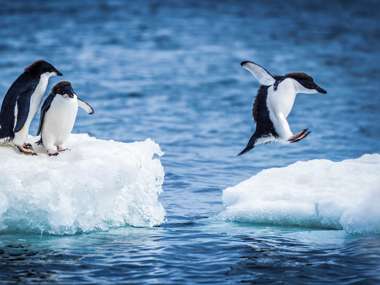Visit Antarctica
Travel deep into the vast, unexplored continent of Antarctica with a Jules Verne tour and embark on a journey into one of the last undiscovered parts of the globe. People have been trying to uncover the secrets locked within its icy core since the days of Captain Cook in 1770. Only a few have succeeded. Today, we are able to offer exclusive experiences in this most elusive of continents.
The highlight of any tour of this vast wilderness is cruising amongst the sculptural white icebergs, freezing ice flows, and dramatic blue waters off the coastline. While the rocky shores are home to lichens, mosses, and shrubs, the true stars of this other-worldly landscape are the marine mammals and seabirds who descend on the area with the warm spring weather. Antarctica is in fact home to the world's greatest concentration of wildlife, where a variety of penguins, seals and whiles are the only permanent residents.
Every day on a Jules Verne Antarctic cruise offers a chance to learn. There will be plenty of opportunities to listen to talks and informational sessions by our experienced guides and crew. This allows travellers to gain unique insight into this amazing continent. As your journey unfolds, your knowledge of this mysterious region will deepen, as will your appreciation for Mother Nature and its ability to survive in these harsh conditions.
Expedition Antarctica
An unforgettable 15-day journey taking discerning travellers to distant lands



